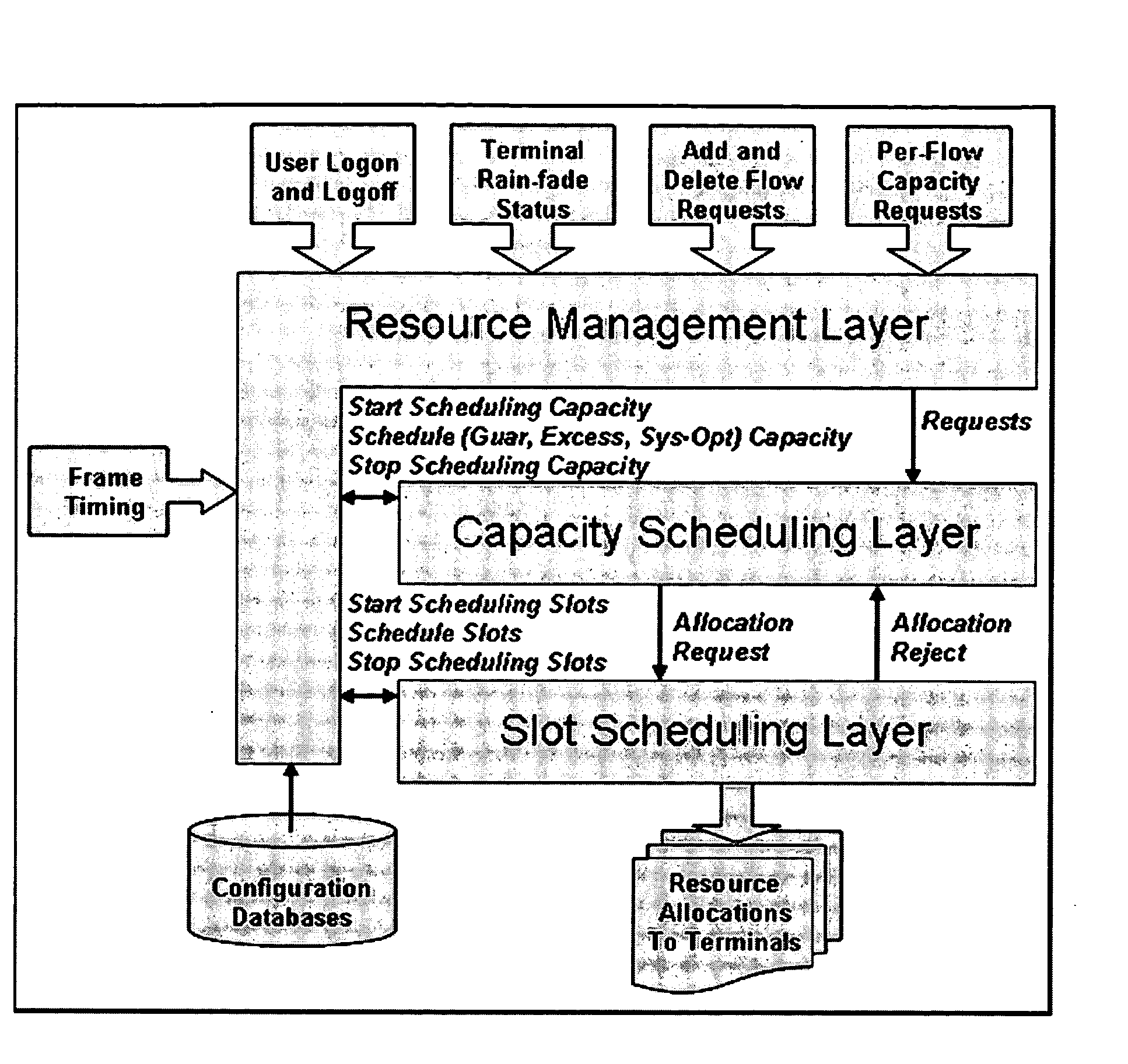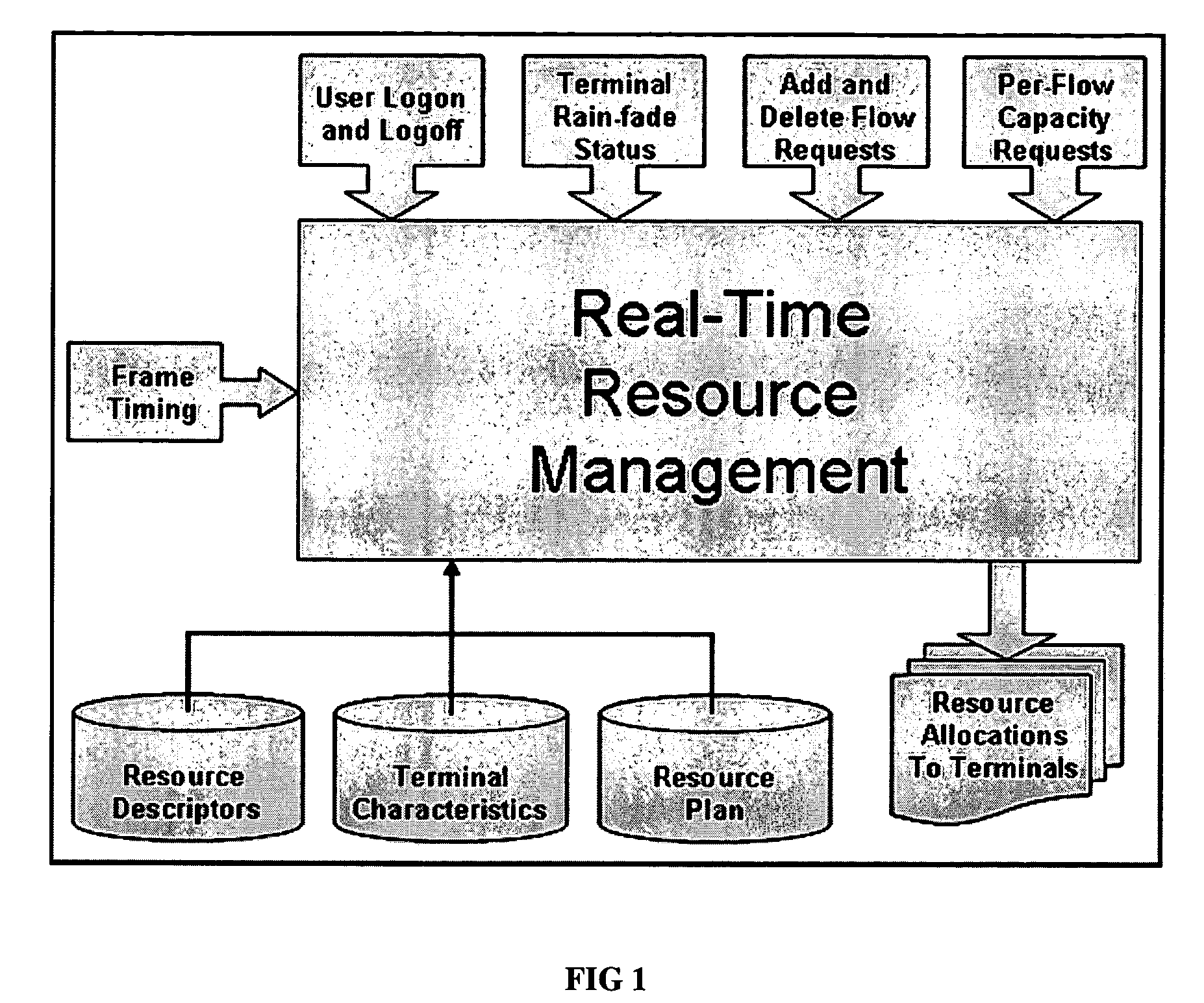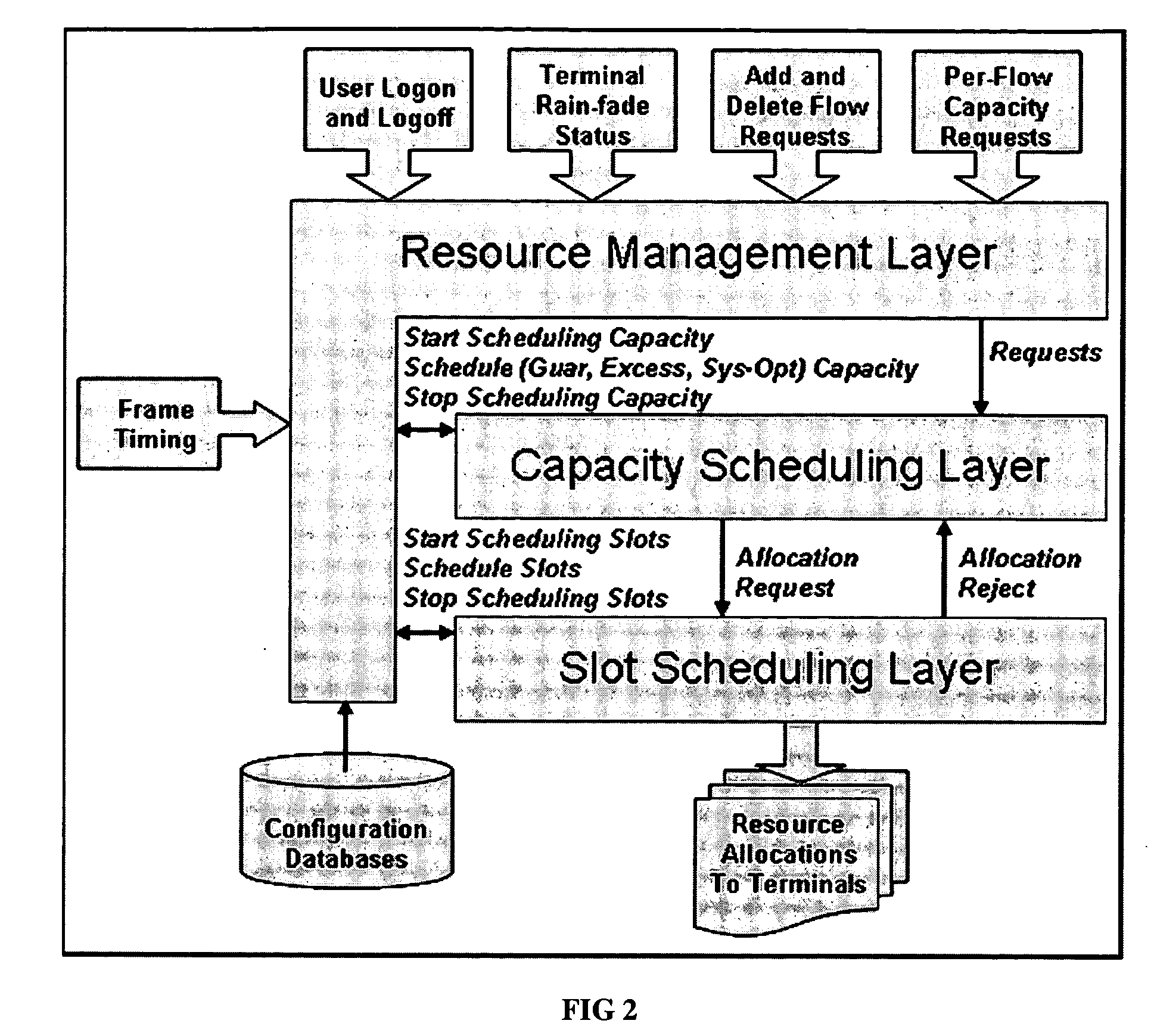Advanced TDMA resource management architecture
a resource management and resource technology, applied in the field of advanced tdma resource management architecture, can solve problems such as blocking excess capacity allocations
- Summary
- Abstract
- Description
- Claims
- Application Information
AI Technical Summary
Benefits of technology
Problems solved by technology
Method used
Image
Examples
example 1
[0100] An embodiment of the invention described herein is presented below, illustrating key elements of the resource management architecture and providing a sample design approach for the Resource Management Layer. This example provides a description of possible external and internal interfaces, data structures and definitions, and functions and utility routines used in a specific RML implementation of the invention.
[0101] (A) Interfaces
[0102] This section describes the internal and external interfaces involved in the RML design approach, namely:
[0103] (a) RML External Interface
[0104] (b) CSL Interface to RML
[0105] (c) SSL Interface to RML
[0106] (d) SSL Interface to CSL
[0107] (e) SSL External Interface
[0108] A detailed description of these interfaces is provided below.
[0109] (a) RML External Interface
[0110] The external interface primitives to RML are defined in a generic manner. Some of these messages may be generated internally at the NCC by other functions (e.g., Rain-f...
example 2
[0504] Example 2 provides for the application of an embodiment of the present invention in a DVB-RCS Satellite Network. In particular, this embodiment of the invention provides for DVB-RCS Specific Mapping. References include “Digital Video Broadcasting (DVB)—Interaction channel for satellite distribution system”—ETSI EN 301 790 v1.3.1 (2003-03), and “Digital Video Broadcasting (DVB)—Interaction channel for satellite distribution system—Guidelines for the use of EN 301 790”, ETSI TR 101 790, v1.2.1 (2003-01).
[0505] A DVB-RCS network is capable of optionally authorizing and authenticating end-users or end-user hosts that are beyond a Return Channel Satellite Terminal (RCST). Accordingly it is feasible to support the following hierarchy and SLA options:
[0506] End-User (all Flows—Default Flow)[0507] END-USER AND SPECIFIC FLOW
[0508] RCST (all Flows—Default Flow)[0509] RCST AND SPECIFIC FLOW
[0510] Note that these SLA arrangements are hierarchically arranged below a Cluster or Default C...
PUM
 Login to View More
Login to View More Abstract
Description
Claims
Application Information
 Login to View More
Login to View More - R&D
- Intellectual Property
- Life Sciences
- Materials
- Tech Scout
- Unparalleled Data Quality
- Higher Quality Content
- 60% Fewer Hallucinations
Browse by: Latest US Patents, China's latest patents, Technical Efficacy Thesaurus, Application Domain, Technology Topic, Popular Technical Reports.
© 2025 PatSnap. All rights reserved.Legal|Privacy policy|Modern Slavery Act Transparency Statement|Sitemap|About US| Contact US: help@patsnap.com



